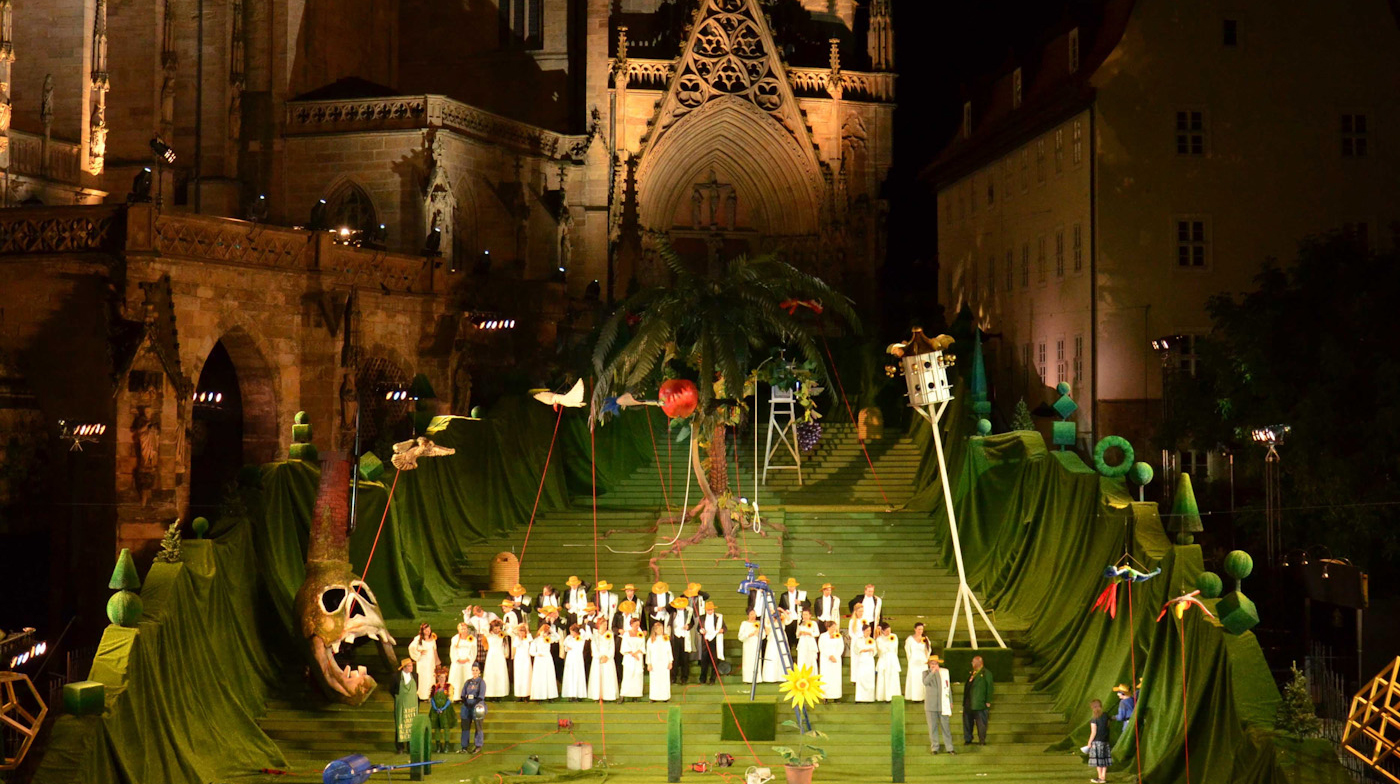First TiMax Tracker and TiMax2 SoundHub purchase by Neumann&Müller
Source: www.outboard.co.uk
Erfurt is a beautiful medieval cultural centre, steeped in history reaching right across Europe. The stunning cathedral forms a focus, particularly across the three weeks of every summer when it provides the backdrop to the Domstufe Festspiele - an open-air theatrical extravaganza which takes the vast medieval cathedral steps as its performance platform. This year's production by Guy Montavon of Mozart's final opera transformed the imposing cathedral steps into the lush green of a magical garden where the enchanting story unfurled to capacity audiences every night.
With N&M's local point-man Steffen "Schluppi" Schlupp co-ordinating logistics, the sound design was created by N&M's amplified-opera specialist Omar Samhoun, who also handled the main mix and soloists, with Helge Petzold mixing orchestra and Alexander Nickol balancing the chorus vocals. TiMax sound design and programming support onsite was provided by Out Board's Robin Whittaker with Matthias Ziegenberg of TiMax distributor Pro-Audio Technik.
The TiMax SoundHub delay-matrix fed an assortment of d&b line-array and trapezoidal cabinets, with main left and right hangs and outfills comprised of a selection of Q1, Q7 and Q10 boxes. Across the front of the stage three Q7's were concealed in beehive scenic elements, providing the dual role of front-fills and first-wavefront reference anchor speakers (more later). More Q7 first-wavefront speakers were hidden in graphics panels about 15m upstage, and one further anchor was located about 40m deep upstage, comprised of a small d&b T10 compact line-array system concealed inside a weather-station prop. A row of d&b E0 nearfill delays were mounted on the handrail half way up the audience seating.
Six TiMax Tracker TT Sensors were located around the periphery of the stage mapping the huge performance area in three-dimensions to an accuracy of 15cm. Eleven soloists and chorus principals wore miniature TT Tags emitting a 6-8GHz radar-frequency signal which enabled the TT Sensors to follow them around stage in real-time. This data was sent via a MIDI data stream to the TiMax SoundHub delay-matrix which applied continuously varying level and delay parameters to every radio mic thereby maintaining seamless audio localisation simultaneously for each performer as they moved around the stage.
The three layers of first-wavefront reference speakers on stage were key to the success of this source-oriented reinforcement approach, due to the extremely deep scale of the stage and consequent inverse square law attenuation. To ensure audience members would localise to the performers' acoustic vocals originating from far mid- and upstage areas, the first-wavefront reinforcement served to boost their original time-zero acoustic sources so that secondary arrivals from subsequent main and nearfield delay speakers were kept within the 6-8db window that would allow them to perform their vital Haas-effect audio localisation task.
On a flying visit to check out the show Neumann&Müller's owner and founder Herr Jürgen Neumann declared himself to be highly impressed at how realistic sounding it was. As sound designer colleague Omar Samhoun observed: "..it was not just good it was really very good".
